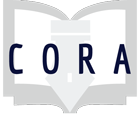CCLI (California Conference on Library Instruction)
I recently presented a lightning talk on CORA at the California Conference on Library Instruction (CCLI) at the University of San Francisco.
- Read more about CCLI (California Conference on Library Instruction)
- Log in or register to post comments
- 102 reads
